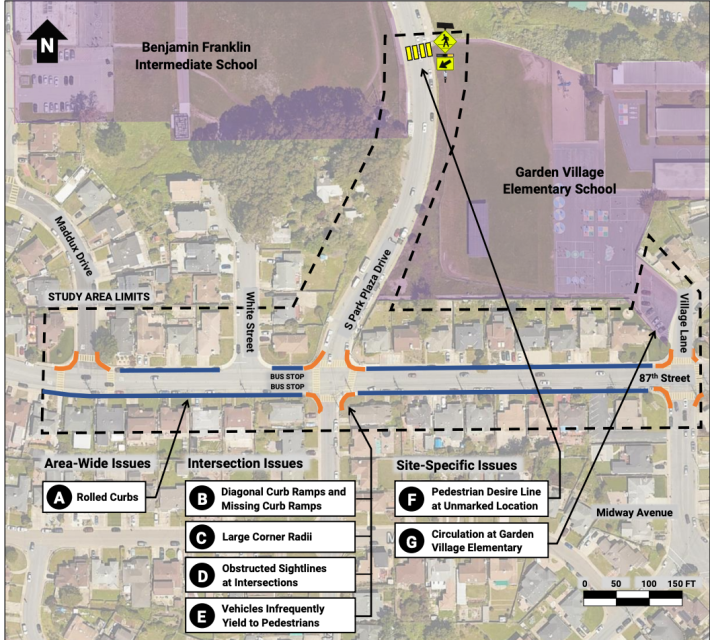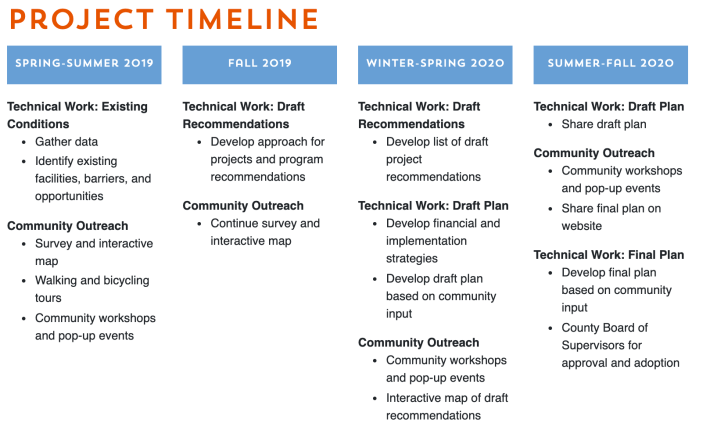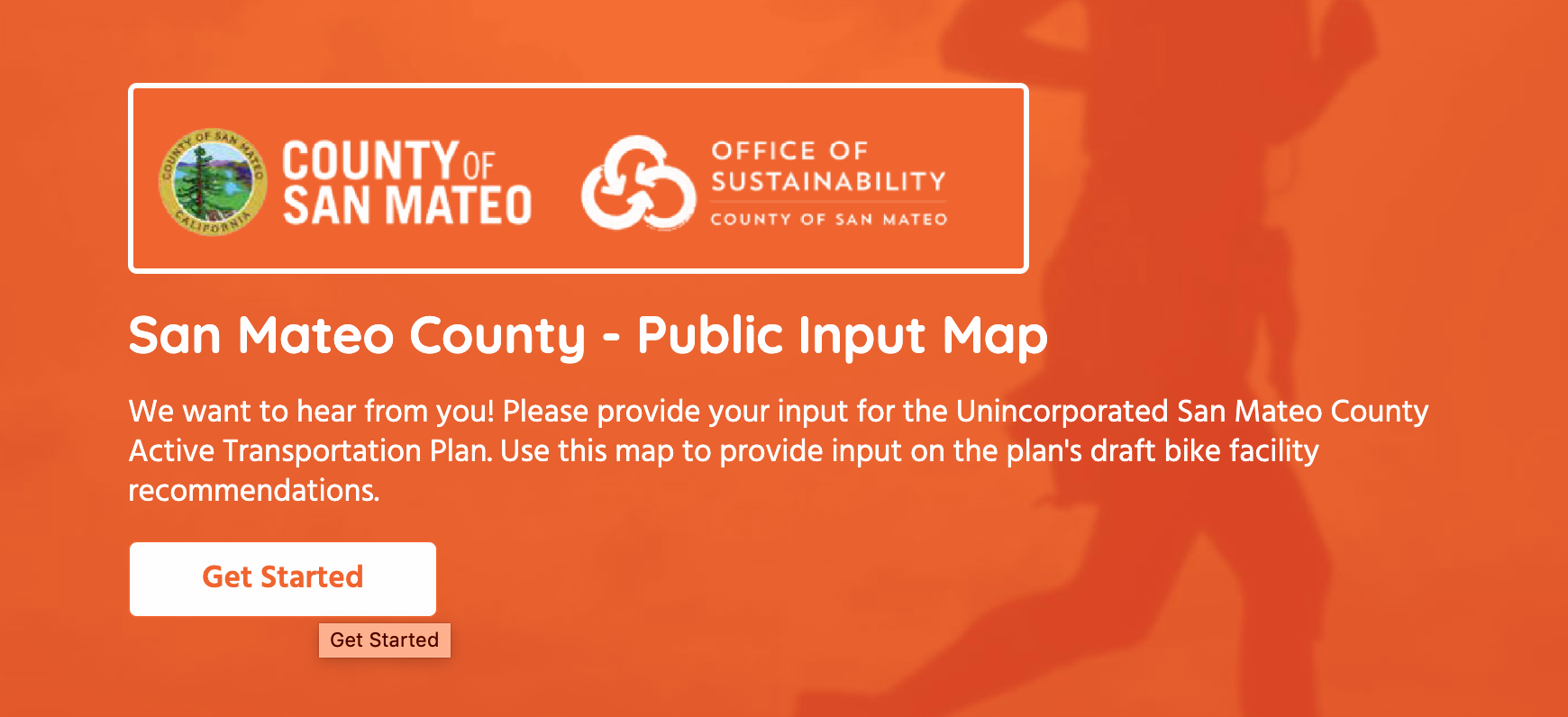For the better part of a year, staff at the San Mateo County Office of Sustainability has been working with advocates, elected officials and residents of the unincorporated portions of the county on an active transportation plan. The plan will combine policies, recommendations and projects that can help "create more livable communities" according to the project goals. The Active Transportation Plan is the first of its kind for Unincorporated San Mateo County.
The draft plan recommendations have received high marks from advocates, both for the efforts to bring people into the process and for the projects it proposes.
"We are really appreciative of the efforts the County is taking for active transportation in the unincorporated areas - these areas, since they do not fall under any city jurisdiction often get neglected, while they could be great connections between different jurisdictions," says Sandhya Laddha with Silicon Valley Bicycle Coalition.
This month, staff was planning a group of public meetings to introduce the draft plan recommendations and gather feedback from the public. Then, as has happened across the Bay Area and the world, all of the upcoming meetings were cancelled. However, the work remains. And while the timeline for the plan might change, the county is encouraging people to check out the project's updates online, submit feedback through their "public input map" and sign-up for updates on the "contact us" portal.
“Head on over to our website and take a look at the plan," requested Julia Malmo-Laycock in an interview with Streetsblog, completed last week. "The more input we get on our draft recommendations, the better the plan will reflect the communities’ priority and vision."
The timing of the cancelled meetings couldn't come at a worse moment. As the county begins unveiling actual projects, the potential for blowback becomes larger as does the chance to elevate favored and needed projects. For her part, Malmo-Laycock is proud of the plan as it is, but wants to see many people give feedback so they can refine it going forward.
“It’s become a really expansive network. If you look at the map, there are a lot of dashed lines showing the new connections. We have a ways to go, but I think we have a really exciting way forward for us,” she continued.

"Julia from the Office of Sustainability has been sharing updates of the Plan at every step, so that we can share that information with our members, for them to provide input. The public outreach map has been very transparent, since everyone can see comments made by others," continue Laddha. While public outreach is critical, the plan is based off more than just the input received. The science behind the planning included staff researching collision data and mode-share data, augmenting commute data from the census with that from an annual county-wide bicycle and pedestrian count, site visits and a demand and technical analysis.
Originally, the county planned to vote on the plan this summer or fall. But of course, all of that is in flux. Regardless of when the plan is passed, the age-old question of how to pay for all of the proposed projects becomes possible.

The draft plan will advance two strategies to bring these plans to fruition: work to make sure that smaller projects are completed when related public works are done (i.e. bike lanes are painted after a resurfacing) and begin to aggressively seek funds from existing revenue streams and state programs.
“The plan will include a funding and implementation section that provides guidance for how to fund some of these projects," Malmo-Laycock concluded. "We will go through a project prioritization process that considers a variety of factors: safety, equity, comfort are part of that decision. This will help us prioritize some of the higher cost projects that we should be pursuing funding for.”
But to get all this done, they need your feedback. Remember to check out the project's updates online, submit feedback through their "public input map" and sign-up for updates on the "contact us" portal.





